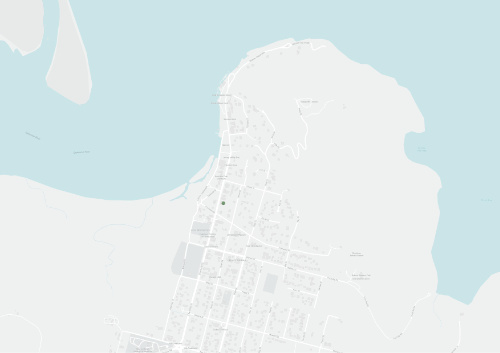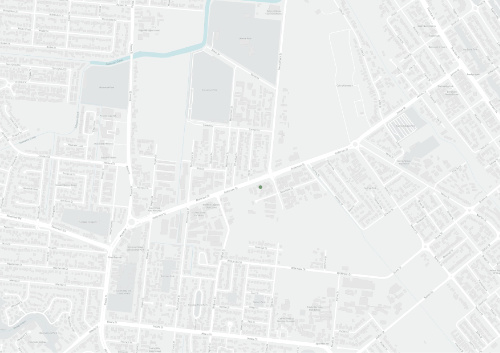The Communities and coastal habitats of eastern Cape York will benefit from the Australian Government’s Reef Trust funded, Catchments to Coral program. Running from 2021–2023, the project will invest in a broad range of activities that focus on improving the health and resilience of eastern Cape York catchments and coastal ecosystems.
Land Use / Tenure
Related Content
Cameron and Michelle MacLean have owned Merluna Station, a north western Cape York grazing property, since 2004. Cape York NRM’s Andrew Hartwig started working with the couple in 2019 as part of the Healthy Farming Futures project which supports graziers in the Cape’s western flowing catchments to improve ground cover, soil condition, and vegetation biodiversity in order to reduce erosion and improve the water quality of the Gulf of Carpentaria.
Cameron MacLean spoke to Cape York NRM about what this means for Merluna.
The purpose of this Act is to regulate the clearing of vegetation in a way that:
Poster outlining a set of guiding priniciples on which Laura Rangers will operate on their country. The country plan, through extensive consultation with Traditional owners and historical people, reflects the knowledge and concerns of the Indigenous groups identifying with the area surrounding Laura. Most of the concerns explored in this document are cross-cultural, varying only in relative importance depending on their relevance to specific interest groups.
The Annan-Endeavour Catchment Management Group has developed this Strategy in close association with all interested community, government and industry groups. The Plan provides long term direction for managing the future of land, water resources and biodiversity of the Catchment and is the foundation for community investment decisions to ensure improved natural resource management.
This document was released in March of 2012 following a 2007 Federal Court ruling which recognised the Eastern Kuku Yalanji people's of 129,600ha of country between the South Mossman River and just North of Black Mountain near Cooktown.
Caring for Kuku Nyungkal Country
Our vision for our bubu (land)1 is to
-
Maintain our Nyungkal culture, belief, customs and law/lore;
-
Sustain, conserve, and preserve our country, landscapes, waters, mountains and all our cultural sites;
-
Care for our people and their social and economic well being.
The Laura-Normanby Catchment Area covers a vast and relatively undeveloped area with extensive riverine and wetland systems, one of Queensland's largest conservation areas (Lakefield National Park), numerous sacred aboriginal sites, good cattle country and rich agricultural lands. The majority of residents and landholders in the Catchment recognise the unique attributes of the area and the need to protect and preserve these attributes for the future. Most are working hard to develop the land in a sustainable manner.
An Act to provide for the identification of the significant natural and cultural values of Cape York Peninsula, and cooperative and ecologically sustainable management of Cape York Peninsula.
The Wujal Wujal planning scheme was released in 2013 by the Wujal Wujal Aboriginal Shire Council and set out the council's intention for the future of Wujal Wujal over the next 20 years from 2013.
The Mitchell River Watershed Strategic Plan 2013-2016 is an update of the Mitchell River Watershed Management Plan created in 2000. It should be used to guide the direction of the Mitchell River watershed management group in prioritising the work they do in the catchment, and should be reviewed in 2016. The original plan written in 2000 contains detailed information on the watershed and its issues, and should be used a reference document to supplement this document.
The Coastal Management Plan is prepared under the Coastal Protection and Management Act 1995 (Coastal Act) to describe how the coastal zone of Queensland is to be managed. The objects of the Coastal Act related to coastal management are to: provide for the protection, conservation, rehabilitation and management of the coastal zone, including its resources and biological diversity; and, encourage the enhancement of knowledge of coastal resources and the effect of human activities on the coastal zone.
This document is the introductory pages for the Northern Peninsula Area Council's 2010-2020 Land and Environment Management Plan released in December 2010. This is a draft document broken into three sections; introduction, an overview of plans, and Land use and Land Management constraints.
This document was released by the Western Cape Communities Trust (WCCT) and Western Cape Communities Coordinating Committee (WCCCC) as a plan to deliver on 4 key objectives within the mining lease area surrounding Weipa.
Reef Plan is a joint commitment of the Australian and Queensland governments. The plan is a collaborative program of coordinated projects and partnerships designed to improve the quality of water in the Great Barrier Reef. It identifies actions that will help minimise the risk to the reef from a decline in the quality of water entering the reef from adjacent catchments, including improving land management in reef catchments to reduce non-point source pollution.
Published by the Department of State Development, Infrastructure and Planning. The plan identifies and interprets the state’s interests in land use planning and development, as described in the State Planning Policy, for the Cape York region. The plan does this by evaluating and balancing competing state interests in a regional context. It provides more detailed regional guidance for some state interests to ensure they are addressed in a coordinated fashion across the region within local government planning schemes. The plan achieves this purpose through a combination of:
This community, heritage, and environment management plan was developed by the South of Embley working project group for the area of Rio Tinto Alcan's mining lease between Aurukun and Weipa in mid 2011.
Technical Report on Rehabilitation Needs
Primarily, this Plan is for Kaanju people living on homelands, but it also serves as a guide for external land and resource management, conservation, service delivery, economic development and community development organisations and agencies, both government and non-government, engaged with Chuulangun Aboriginal Corporation and Kaanju people on issues concerning our traditional homelands and associated resources.
The aim of the Plan is to ensure that natural resources are well managed, and protected where required, for the benefit of us all and future generations. The Plan aims as far as possible to be consistent with other regional strategies. As part of the 'bigger picture' this process is also consistent with the State and National Plans and strategies that address the broad issue of ecologically sustainable development.
This environmental management plan was released by the North Queensland Bulk Ports Corporation as part of their environmental program with the objective of acting as a reference document for all then-current and potential users of the Weipa port.

